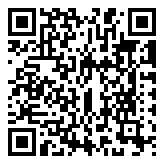
Preferred Blog
Preferred has been serving the Tinley Park area since 1991, providing IT Support such as technical helpdesk support, computer support, and consulting to small and medium-sized businesses.
What Do All Those Different File Types Do?
There are a lot of file types that are put to use in the modern workplace, all with their own importance. Let’s review what the different file extensions—the little series of letters after the file name—mean, and how they influence how you can use a given file.
Your Daily Documents
.DOCX / .DOC
If you’ve saved (or opened) any text in a word processor—be it Microsoft Word, Google Docs, or even Apple Pages—you’ve created this file type.
This image file type—the Portable Document Format—is designed to be widely accessible and essentially unchangeable, ensuring that its formatting can be preserved. As such, it is commonly used to share final versions of documents that are not meant to be (or shouldn’t be) edited, like invoices, forms, and contracts. Most web browsers can open these, as can Adobe Acrobat Reader.
.XLSX / .XLS
This is the spreadsheet file type, consisting of rows and columns of data. As such, it is used by software like Microsoft Excel and Google Sheets to track budgets, lists, and charts.
.PPTX / .PPT
Similarly, these files are slide decks for programs like Microsoft PowerPoint and Google Slides. They are how your presentations are preserved.
Image Files
.JPEG / .JPG
Suitable for all colorful and complex photos and images, this is the most common image format. Therefore, it only makes sense that it works with any browser, editor, or image viewing application you have.
.PNG
This image file format has a special feature: it allows for transparent backgrounds, making it ideal for any image that shouldn’t appear with a border around it, like a logo or icon. The same applications open these images as well.
Compressed Files
.ZIP
If you need to send a lot of files and folders efficiently, a .zip file will be key. These files are effectively convenient archives of the data you’re trying to transmit, compressed to be much smaller—and therefore, faster and easier to move. It’s also a lot easier to access this data, as modern computers are equipped to extract the files from the newly decompressed folder. Just double-click it to review the content, or right-click and select Extract All… to create a new folder with the files in it.
Stay Tuned for More IT Assistance!
For more direct help with your business technology, find out what we offer by calling 708-781-7110.
Sign Up for Our Newsletter
Latest Blog Entry
We all have too many accounts nowadays. Between our personal lives, work, and practically all the entertainment we consume, there are dozens to keep track of and manage… and then there are the ones that charge us for a service they offer. The stacking costs of these services...
Latest News
Best Places to Work - 5 YEARS STRONG!!
Preferred is once again, honored for being a Best Place to Work for the fifth straight year! Our team is what makes Preferred a Best Place to Work.
Daily Herald Suburban Business 2024 Best Places to Work Honorees The Daily Herald Suburban Business has announced the names of 51 companies, in 5 categories of competition, that are honored as the 2024 Best Places to Work in Illinois. This statewide survey and awards program was designed to identify, recognize and honor the best places of employment in Illinois, benefiting the state's economy, its workforce and businesses.




Comments